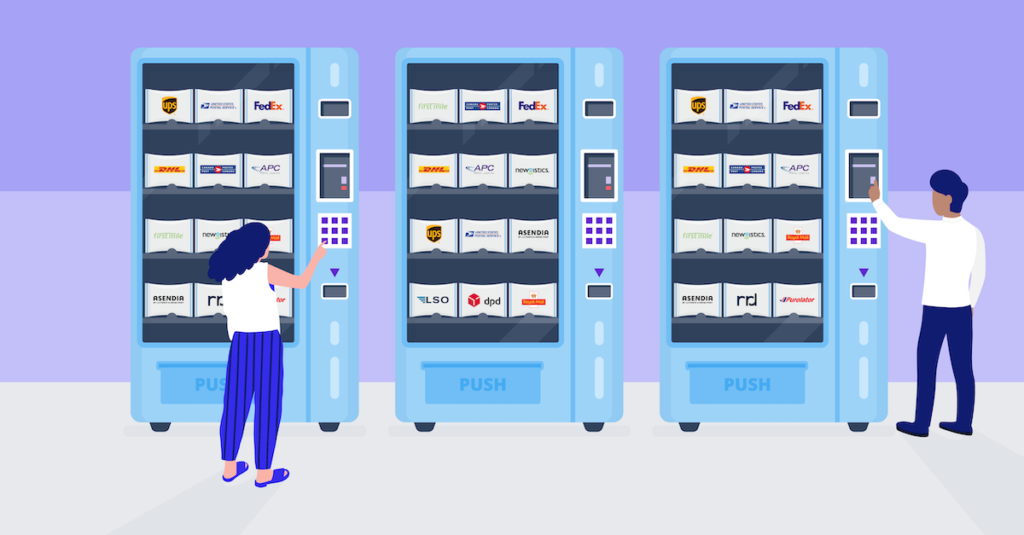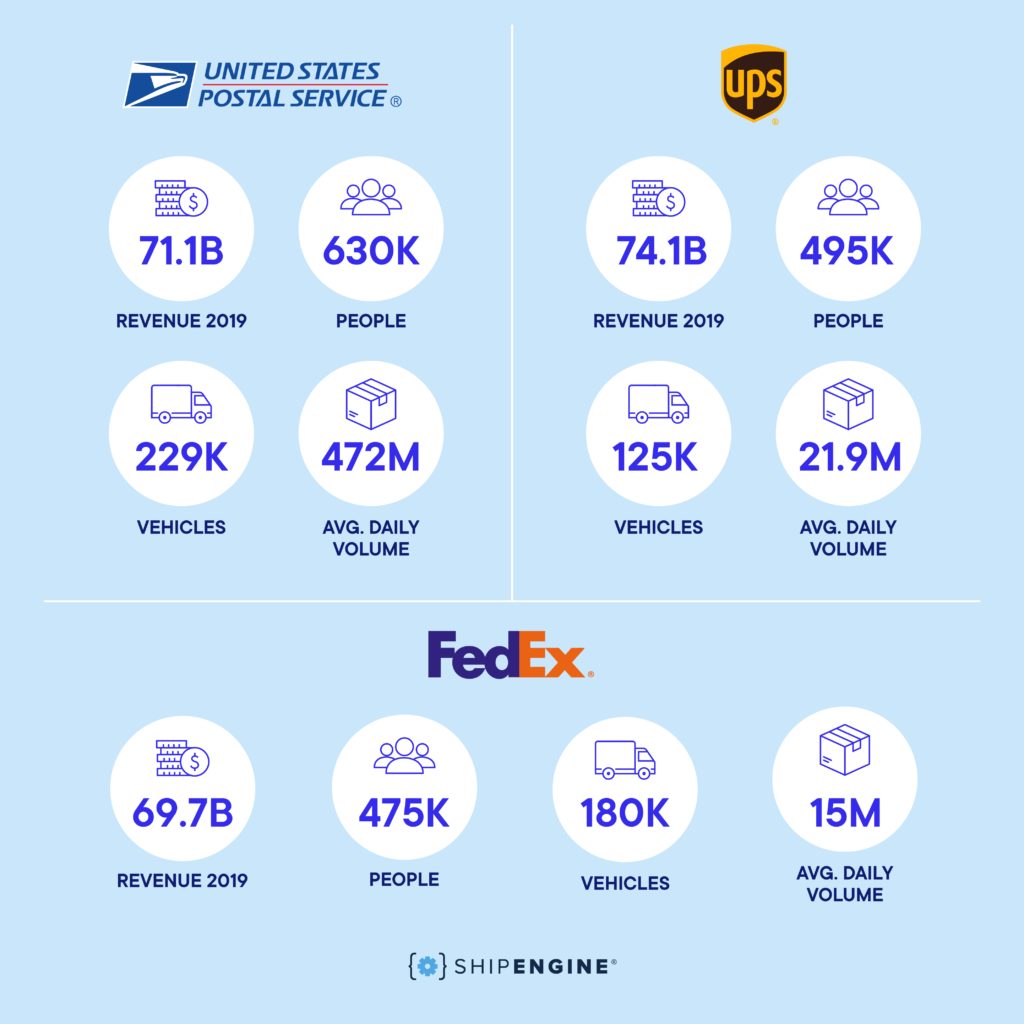How to Choose the Best Shipping Carrier

There’s a huge amount of excitement when you launch an ecommerce business and orders start rolling in. This feeling is often followed by sheer terror, as you begin to wonder, “How are we going to ship these orders?”
Shipping is complicated for any number of reasons, not least of which is the overwhelming number of carriers competing for your business. But, which ones benefit YOU most?
Maybe you’ve heard from other fellow merchants that the United States Postal Service is the cheapest way to ship. But, what if you’re shipping a large or oversized package? Or, what if you’re wanting to find the best carrier for shipping wine? Carriers have varying restrictions on shipments, so depending on what you’re shipping, there could be certain carriers that fit your needs better than others.
Every business is unique, and the right carrier for you depends on the unique characteristics of your business. It’s best to apply a series of filters to the vast list of carrier options available. Following this process often provides clarity on the carrier or carriers that will best meet the needs of your business and its customers.
Here’s a look at the four filters you should apply to your carrier decision.
1. Price
When you’re running a business, the price of any service (postage included) always matters. High shipping prices are typically driven by these three factors:
- Speed: How fast will the package arrive?
- Service: What level of tracking and delivery confirmation is available?
- Size: How large or heavy is the item you’re shipping?
- Surcharges: Are there any additional fees you should expect?
You’ll pay more for your shipment to arrive faster, for higher levels of tracking and delivery confirmation, and when shipping larger, heavier items. Are your customers willing to pay more for shipping in exchange for one or more of these three things? Will you be expected to pay any additional residential fees or fuel surcharges?
Does your business model allow you to subsidize more expensive shipping while still earning a profit? Only you can answer these questions based on the realities of your day-to-day operations.
And, keep in mind that larger carriers (like the USPS, FedEx and UPS) offer a wide range of different services. They are huge companies delivering millions of packages each year, and they offer shipping services at almost any price point. Here’s how the USPS, FedEx and UPS stack up against each other:

Of course, there are other carriers, too — from smaller regional carriers such as Canada Post to international-friendly consolidators like GlobalPost (GAP). Other carriers may provide more specialized services based on geography or other factors. At ShipEngine, we’re integrated with more than 30 different carriers.
2. Delivery Expectations
Imagine you run a monthly subscription service, like Kiwi Co. You’re shipping to your customers on a predictable schedule, and your customers are unlikely to require detailed tracking information. You have the luxury of choosing a slower shipping service with limited tracking and delivery confirmation.
Now, imagine you run an online retail business that’s competing with big-name marketplaces. Your target market is used to getting online orders in just a day or two, and with detailed tracking information they’re likely to check more than once. You’ll need to invest more in faster shipping with better tracking and delivery confirmations.
A monthly subscription business is better positioned to offer free shipping or to add only a small shipping surcharge to monthly fees.
But an online retailer may still feel they need to offer free, fast shipping. So, the ability to instantly compare rates between carriers and services can be a wildly beneficial way to help decrease the shipping overhead left on the business. Every penny counts!
There’s good news for many retailers, though. The weight of goods sold online (clothing, jewelry, toys, etc.) tends to be relatively low. Lightweight goods can help keep shipping costs down. For example, shipments under a pound can ship through the USPS as First Class Mail. That’s a relatively inexpensive service for fulfilling online orders. Even private carrier services, such as UPS Mail Innovations, help small and mid-size businesses procure low-cost services for low-weight shipments.
3. Weight
Once you start shipping heavier packages, the cost of shipping understandably goes up. As noted above, you can ship items of a pound or less by First Class Mail through the USPS, but you graduate to other (more expensive) services as your items get heavier.
For example, imagine you’re shipping mowers, weed eaters, leaf blowers, and other equipment for lawn care. These items are naturally going to be heavier and bulkier, and you’ll be forced to pay more for shipping. At these heavier weights, the right carrier and the ideal service may depend on where you’re shipping from and where you’re shipping to.
4. Destination
At ShipEngine, we offer built-in integrations to a wide range of carriers, everything from the big brands (like the USPS, FedEx and UPS) to international carriers (like GlobalPost and Access Worldwide) to regional solutions (like LSO). Where you’re shipping will likely guide you toward the best carrier and service for your packages.
Keep in mind that there can sometimes be a blurred line between carriers depending on your destination and the delivery promise. Certain carriers may be more expensive if delivering to rural communities, and some even hire out local carriers to complete these last-mile deliveries — directly impacting the shipping costs for you and your customers. Often times, major carriers may also elect to work with the USPS and others on “workshare” products that combine capabilities of the carriers to either utilize pricing or delivery capabilities, based on the customer need.
Making the Right Choice for Your Business
Ready to start shipping? ShipEngine can provide access to all of the carriers needed for your platform, brand, or third-party logistics company to thrive. Follow these three steps to begin:
- Use the Filters Above: Read through the four filters above and apply them to your business. Does one carrier or service stand out above all the others?
- Understand Your Costs: When negotiating with carriers, always take into account the full costs (including fees and surcharges) and how they impact your revenue.
- Diversify With Multiple Options: What many online sellers discover is that there’s power in having options. Having access to multiple carriers, or offering customers access to multiple carriers, makes a huge difference in creating the right shipping experience at the right price.
When you choose ShipEngine, you integrate just once to our API and immediately get integrations to 50-plus carriers and marketplaces. Many of our carrier integrations even come with built-in discounts that help you save more than you traditionally would, all while better serving your customers.
Need help choosing the best carriers for your business? We’re always here to help. Contact us today to learn more about getting up and running with ShipEngine.


